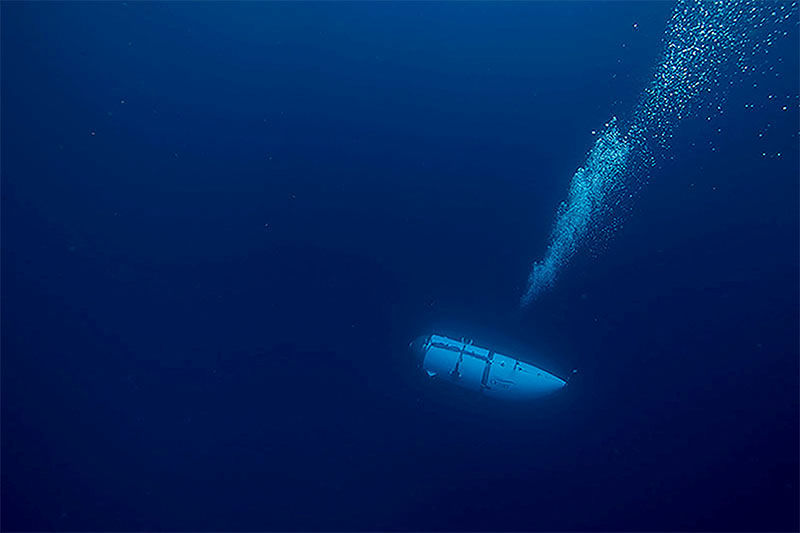According to the U.S. Coast Guard, Canadian aircraft have reported the detection of underwater sounds in the North Atlantic during the search for a tourist submersible that went missing while on a voyage to the Titanic wreck.
The Coast Guard reported that, following the discovery of underwater noises on Tuesday, search teams have shifted their focus to investigate the source of the sounds using underwater robotic search operations. This development was communicated in a series of tweets by the Coast Guard on Wednesday.
As per the Coast Guard, the ROV searches conducted in the newly relocated area did not yield any results. However, the search operations will persist until further notice.
The Coast Guard did not provide any specifics regarding the characteristics or magnitude of the sounds that were identified, nor did they elaborate on the methodology employed to detect them.
CNN and Rolling Stone magazine has reported, citing confidential communications within the U.S. government, that Canadian aircraft detected recurring banging sounds in the search zone at intervals of 30 minutes. This development was reported independently by both news outlets late on Tuesday.
Rolling Stone, which was the first to break the story, stated that sonar buoys deployed in proximity to the location of the distress signal detected the recurring banging sounds. The magazine further reported that additional sonar equipment detected more banging sounds four hours after the initial detection.
CNN, citing an internal memo from the U.S. government, also confirmed the detection of additional sounds about four hours after the initial banging sounds were picked up. However, the news channel noted that the second instance of noise was not characterized as banging in the memo.
According to a recent government memo, as reported by CNN, the detection of further acoustic feedback will aid in directing surface assets to the area and also implies the possibility of survivors still being present.
It remains unclear at present if the news reports were sourced from the same origin.
As per the vessel’s specifications, the Titan, which is operated by OceanGate Expeditions based in the United States, was designed to remain submerged for a period of 96 hours. This implies that the five individuals aboard the vessel have until Thursday morning to utilize the available air supply.
At the time of the incident, the small submarine was occupied by a crew of one pilot and four passengers. The vessel experienced a communication loss with the parent ship on the surface approximately one hour and forty-five minutes into its two-hour dive.
#Titanic #Submersible




